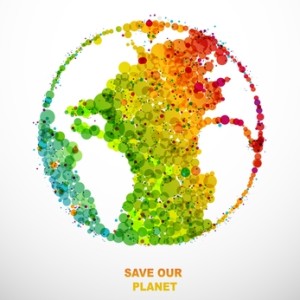15 Ways to Live a Greener Lifestyle in 15 Days
Living with the earth in mind doesn’t have to take a lot of money, years or even effort. In order to live a greener lifestyle in just two weeks, try these inexpensive earth-saving tips:
Reusable Shopping Bags
Paper or plastic? Choose neither — when running errands or grocery shopping, pack your own reusable bags. A cotton-mesh tote — which cost about $5-$20 — reduces waste, carries more and can be used over and over.
A Litter-less Lunch
Even if, it’s just once a week, pack your lunch (and not in a brown bag). Use reusable containers and plan on washing plastic utensils or packing your own silverware.
Eco-friendly Cleaning Products
A gallon of off-brand distilled white vinegar costs about $2-$5 and when diluted with water can cut through grease and clean messes just like other household cleaners. It’s non-toxic, anti-bacterial and effective at cleaning your house without chemicals.
No More Paper Towels
Stop buying paper towels and instead use washable rags to clean up messes around the house. Cut old T-shirts or buy a package of 10 heavy-duty wash cloths at the dollar store.
Switch to CFLs
According to the U.S. Environmental Protection Agency, fluorescent light bulbs use less energy, reduce light bulb changes and lower greenhouse emissions. In turn, this saves money and of course the environment.
Rethink the Thermostat
Instead of turning down the air conditioner to mediate the temperature in your home. Focus on variables in the room, such as air ventilation and natural lighting. Use roller shades that are energy efficient and made out of eco-friendly materials to block harsh rays that could be making you and the room feel hotter.
Use a Mug
Drink your coffee out of a mug instead of a paper cup. Try a reusable water bottle instead of buying and tossing plastic bottles.
Wash Clothes in Cold Water
Always wash clothes in cold water. According to EnergyStar.gov, 90 percent of the energy used to operate a washing machine goes to heating the water.
Recycle Electronics
Learn what can be recycled and stop tossing items that could be reused. For example, Best Buy recycles computers, print cartridges, radios, washing machines and other electronics and appliances. Some stores will even pick up items, so you don’t have to drop them off.
Buy Bulk
Stop buying individually packaged items at the grocery store and instead buy in bulk to save production and packaging waste.
Shorter Showers
Take a waterproof timer with you in the shower so you aren’t zoning out and taking too long. Invest in a low-flow shower head to save 2,900 gallons of water a year, according to the EPA.gov.
Line Dry When Possible
Rather than throwing your laundry in the dryer, hang them on the line to dry. If you don’t have a backyard, open your shower curtain and use hangers.
Lighten the Load
Remove unnecessary heavy items from your trunk to save gas. According to FuelEconomy.gov, an extra 100 pounds in your vehicle could be reducing your MPG by two percent.
Kill Energy Vampires
Use power strips to turn off unused appliances and stop wasting standby power easily. According to EnergyStar.gov, the average U.S. household spends $100 a year to power devices while they are turned off.
Borrow Instead of Buy
Instead of buying a New York Bestseller or the latest comedy on DVD, borrow it from the local library. After reading or watching your favorite books and videos, donate them to the library or a nearby shelter, thrift shop or school.


















